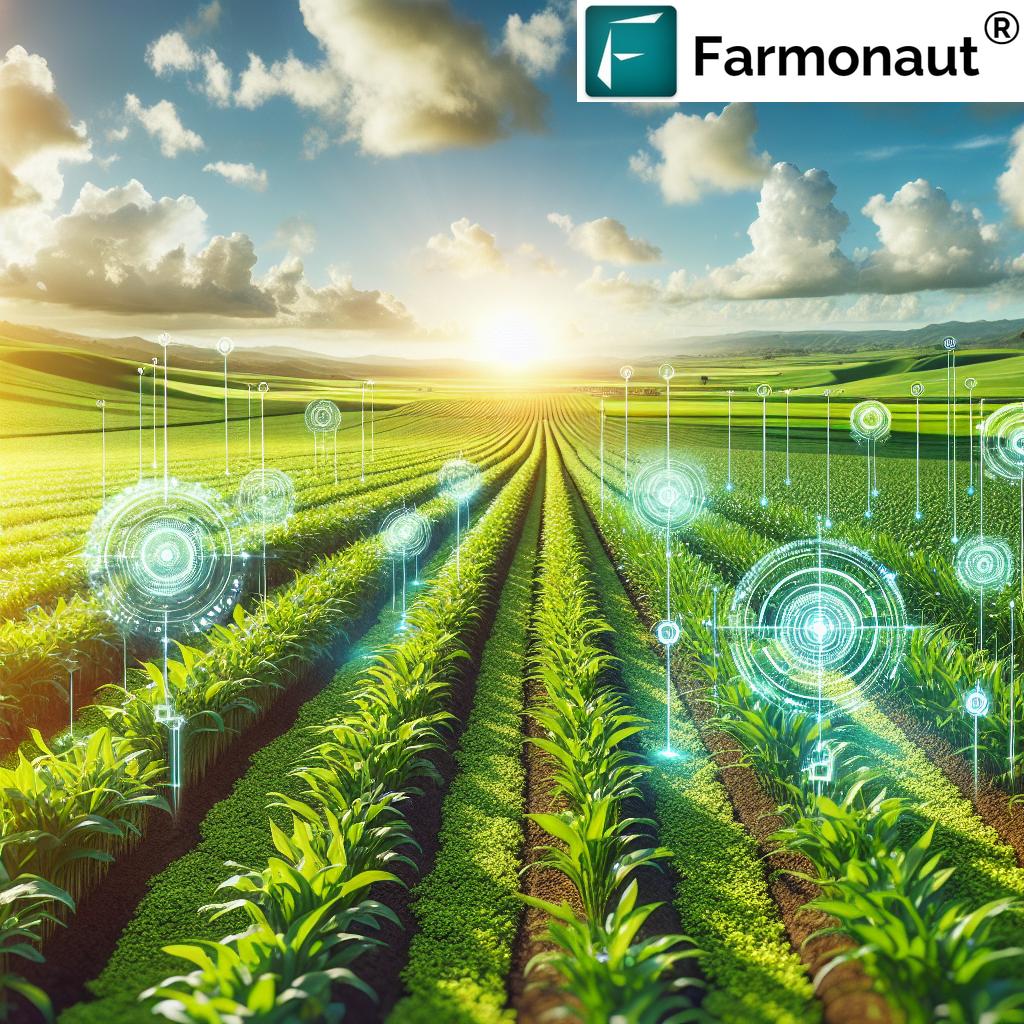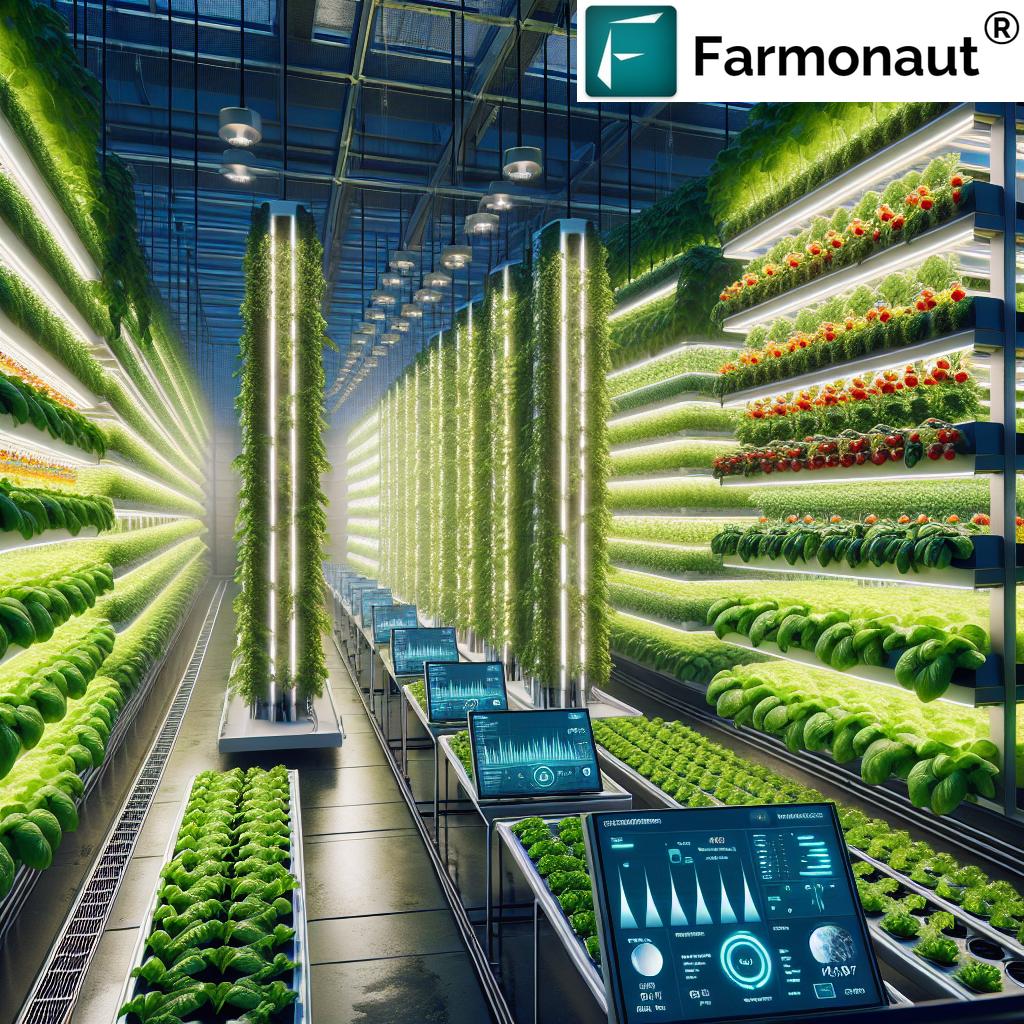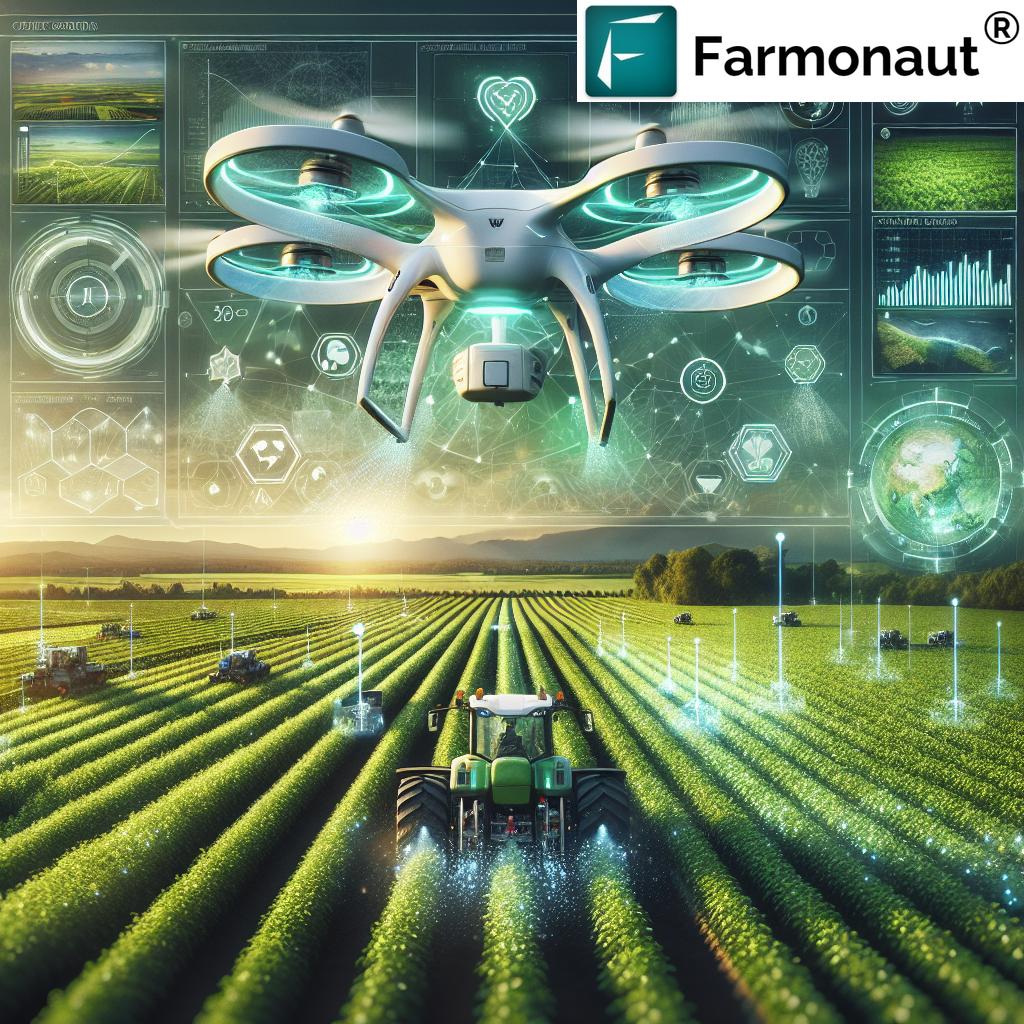Action Thresholds: When Pest Control Is Truly Needed
Table of Contents
- Summary: Action Thresholds in Pest Management – Crucial for Sustainable Agriculture in 2025
- Understanding Action Thresholds: Definition & Relevance
- Why Action Thresholds Matter: 2025 and Beyond
- How Action Thresholds Help Determine When Pest Control Is Truly Needed
- Action Threshold Application in Modern Agriculture, Forestry, and Allied Sectors
- Technologies Enabling Action Thresholds: Monitoring, Data & Analytics
- Pest Action Threshold Comparison Table
- Environmental and Economic Benefits: Lower Costs, Reduced Harm
- Challenges in Defining and Implementing Action Thresholds
- Farmonaut’s Role in Advanced Monitoring & Sustainable Management
- Future Outlook: Dynamic Thresholds, AI, & Next-Gen Solutions
- FAQs
- Conclusion: Building Resilient, Sustainable Agriculture in 2025
“Over 60% of farmers use action thresholds to reduce unnecessary pesticide use, supporting sustainable agriculture practices in 2025.”
Summary: Action Thresholds in Pest Management – A Crucial Tool for Sustainable Agriculture in 2025
The year 2025 stands at the forefront of a sustainable revolution in agriculture, forestry, and allied sectors. Effective pest management remains a cornerstone for productive, resilient, and sustainable farming. Central to this is the critical concept of action thresholds—a pivotal tool that ensures pest control interventions are truly needed and grounded in science. Rather than resorting to frequent or preventive pesticide applications, thresholds provide a decision rule based on pest population, economic cost, and environmental considerations.
This approach is crucial for optimizing yields, cutting unnecessary management costs, and supporting the ecological balance of agricultural systems. Action thresholds help determine when pest control action is truly needed, thereby reducing environmental impacts and promoting farm resilience. As technologies—like remote sensing, digital traps, and powerful analytics—become widespread in 2025, action thresholds are gaining prominence as the clear path forward for sustainable, productive, and environmentally conscious farming worldwide.
Understanding Action Thresholds: Definition & Relevance
Action thresholds (also economic thresholds) refer to the specific level of pest population or damage intensity at which pest control measures become economically justified. In simple words, it draws a practical line: below the threshold, the cost of pest-induced damage is less than the cost of control; above it, intervention becomes necessary to prevent substantial loss.
- Below threshold: No significant impact; natural systems usually keep pests in check, supporting predators and beneficial insects.
- At or above threshold: Damage, pest populations, or risk has escalated—making timely action necessary to avoid greater losses.
This threshold-based approach is a foundational element of integrated pest management (IPM), optimizing crop health with minimal environmental harm.
Why Action Thresholds Matter: 2025 and Beyond
In today’s agricultural and forestry sectors, action thresholds are not just theoretical—they are operational imperatives for sustainable pest management. Key factors driving their importance include:
- Increasing Pesticide Resistance: Overuse of chemical controls can foster pest populations that adapt, making control more challenging and costly.
- Environmental and Health Considerations: Minimizing pesticide applications reduces negative impacts on biodiversity, water bodies, soil health, and food safety.
- Economic Pressures: Margins are thin. Interventions should be economically justified, ensuring that each action delivers maximum return with minimal cost.
- Focus on Sustainability: Markets and policy pressures require practices that prove responsible stewardship of land and resources.
- Technological Advancements: Better monitoring, remote sensing, and analytics empower precise, data-driven decisions, enhancing threshold management.
Thus, action thresholds help determine when pest control action is truly needed, making them a strategic choice for producing healthy crops, sustaining profitability, and protecting the environment in 2025 and beyond.
How Action Thresholds Help Determine When Pest Control Is Truly Needed
Action thresholds act as a scientific decision rule for pest management. Here’s how action thresholds help determine when pest control action is truly needed in practical terms:
-
Pest Monitoring & Data Collection:
- Regular field scouting, traps, or remote sensing assess the level of pests present.
- Population counts and damage intensity are compared against established “action threshold” values for each crop and pest species.
-
Threshold Comparison:
- If monitoring reveals pest populations below the threshold, no immediate intervention is needed. Natural predators, weather, or biological controls often suffice.
- When pest or damage levels rise above the action threshold, timely control measures are essential—whether chemical, mechanical, or biological interventions.
-
Dynamic Decision-Making:
- Thresholds can change based on crop stage, weather, variety, market price, or environmental factors; flexibility and local calibration are crucial for accuracy.
This approach reduces harm, minimizes pesticide use (and costs), and supports beneficial insects and biodiversity—a win-win for farming, environmental, and economic sustainability.
“Studies show action thresholds can lower pest management costs by up to 30% while maintaining crop yield and quality.”
Action Threshold Application in Modern Agriculture, Forestry, and Allied Sectors
By 2025, action thresholds have become a cornerstone in the management strategies of crops like wheat, maize, rice, orchards, and even forestry plantations. Here’s how action thresholds are being integrated in different sectors:
1. Agriculture
- Staple Crops (e.g., wheat, maize, rice): Regular monitoring and clear threshold guidelines help trigger interventions against pests like aphids, stem borers, and locusts only when truly necessary. This reduces pesticide overuse and helps sustain yields.
- Vegetable and Fruit Crops: Digital traps, visual tools, and customized analytics allow for targeted action against pests such as beetles, aphids, and whiteflies once thresholds are crossed—protecting pollinators and natural enemies.
2. Forestry
- Action thresholds are utilized to time the treatment of outbreaks of bark beetles, defoliators, and other forest pests—balancing economic loss, timber quality, and environmental integrity.
3. Allied Sectors & Sustainable Management
- Pest action thresholds are used in controlled environment agriculture, horticulture, and organic systems where both economic and ecological considerations are front and center.
- The threshold-based approach optimizes management costs, pest control timing, and reduces negative environmental impacts. It also supports the resilience of farms and foresters facing pest pressure and climate change.
Technologies Enabling Action Thresholds: Monitoring, Data & Analytics in 2025
The implementation of action thresholds in 2025 is made possible by rapid advancements in various technologies. Here are some of the major enablers:
-
Remote Sensing & Satellite Technology:
Real-time and periodic monitoring of crop and canopy health, pest presence, damage intensity, and environmental stress.
Farmonaut’s satellite-based insights deliver data on NDVI (Normalized Difference Vegetation Index), moisture, and pest hotspots, allowing for precise, informed decisions on interventions. This enables farmers and foresters to assess when pest action thresholds are being approached or exceeded.
Large-Scale Farm Management Tool – Our platform is ideal for remotely monitoring crop health, pest pressure, and making threshold-aligned interventions, especially for large and multi-site agricultural operations. - Digital Traps & Automated Monitoring: Sensor-based and image-capturing systems automatically track the number and species of insects present—feeding real-time pest population data into threshold metrics.
- Data Analytics & AI Integration: Modern algorithms analyze trends, weather forecasts, pest life cycles, genetic resistance, and local conditions to refine action threshold guidelines dynamically.
- Mobile Apps & Web Platforms: Provide pest monitoring support, decision dashboards, and threshold alerts—empowering on-farm action aligned with best management practices.
Want to integrate real-time threshold alerts and pest analytics into your solutions? Explore the Farmonaut API or see our API Developer Docs for seamless syndication in your agritech tools.
Pest Action Threshold Comparison Table
The following table summarizes examples of common crop pests, their action threshold values, affected crops, infestation signs, and recommended sustainable interventions. These values help farmers, foresters, and agricultural managers determine when pest control is truly needed—enabling targeted action and reducing unnecessary chemical use.
| Pest Name | Estimated Action Threshold | Example Crops | Infestation Signs | Suggested Sustainable Actions |
|---|---|---|---|---|
| Aphids | 50–100 per plant or visible colonies on 20% of sampled plants | Wheat, maize, soybean, potatoes, vegetables | Clustering, leaf curling, sticky honeydew, yellowing | Release beneficial insects (ladybugs), neem oil spray, target-specific insecticides if threshold exceeded |
| Stem Borers | 5% infested tillers (rice) or 10 larvae per 100 stems (maize) | Rice, maize, sorghum | Dead heart, “white” heads, frass in stem, larval holes | Crop rotation, biological control (Trichogramma), pheromone traps, spot insecticide |
| Locusts | Presence of swarms or 10+ locusts per m² | Wheat, maize, legumes, pasture | Massive defoliation, visible swarms, rapid crop loss | Mechanical barriers, targeted biocontrol, urgent notified spraying in outbreak |
| Bark Beetles | 2–5 beetles/m² or detection of boring dust on multiple trees | Forests (pine, spruce, cedar, etc.) | Boring dust, exit holes, resin flows, patchy dieback | Early felling of infested trees, pheromone traps, preserve natural enemies |
| Defoliators (eg. caterpillars, gypsy moth) | 15% foliage loss or 25 larvae per 100 branches | Deciduous forests, fruit trees, cotton | Chewed leaves, visible larvae, skeletonized foliage | Bacillus thuringiensis biopesticide, conserve birds/predators |
| Spider Mites | 10–20 mites/leaf or leaves showing stippling on 15% of crop | Tomato, eggplant, beans, ornamentals | Fine webbing, leaf bronzing, yellowing, leaf drop | Release predatory mites, maintain field humidity, selective miticides |
Environmental and Economic Benefits: Lower Costs, Reduced Harm
Using action thresholds as a guiding rule for pest control brings remarkable benefits to our global farming community and ecosystem:
1. Environmental Sustainability
- Minimized Pesticide Use: Thresholds dramatically reduce the frequency of spraying, lowering the risk of runoff into water, soil degradation, and harm to non-target organisms.
- Preserved Beneficial Insects: When action is only taken above scientifically justified levels, populations of pollinators and natural enemies are supported, fostering ecological balance.
- Safeguarded Biodiversity and Health: Limits the negative impacts of intensive pesticide applications on local wildlife, biodiversity, and human health.
2. Economic Viability
- Reduced Costs: Farmers avoid unnecessary expenses for pesticides, labor, and fuel by acting only when and where needed.
- Consistent or Improved Yields: Studies and real-world practice show that applying interventions based on thresholds can maintain or even improve crop yields by avoiding physiological stress from excessive chemical inputs.
- Resilience to Market Changes: Integrated approaches equipped with real-time data help farmers quickly adapt threshold levels to weather, crop prices, and evolving pest pressures.
3. Compliance and Market Opportunities
- Certification-Ready: Many sustainability and organic certification programs require evidence of threshold-based pest management.
Farmonaut’s Blockchain Traceability provides supply chain transparency and supports regulatory or voluntary compliance regarding pesticide use levels. - Carbon Footprint Reduction: Reducing unnecessary interventions and supporting ecological balance lowers the farm’s overall carbon emissions.
Read more about our Carbon Footprinting Solutions for growers and agribusiness.
Challenges in Defining and Implementing Action Thresholds
Despite their vital role, there are substantial challenges in setting and utilizing action thresholds in agriculture, forestry, and allied sectors:
- Variability by Species and Region: Different crops, pest species, and environments demand tailored thresholds; a “universal” number rarely fits all.
- Influence of Crop Stage and Weather: Pest damage intensity and economic loss potential change with crop growth stages (e.g., early seedling vs. flowering), as well as weather variability.
- Market Prices and Economic Factors: In years of high commodity prices, lower thresholds may be justified to protect yield value, while during low-price seasons, thresholds may justifiably be higher.
- Changing Pest Dynamics: Climate change, monocropping, and new invasive species continually shift the balance, requiring ongoing threshold refinement.
- Information and Capacity Gaps: Smallholders or resource-limited farmers may lack access to precise tools, training, or real-time monitoring platforms.
Effective implementation in 2025 and beyond relies on:
- Local validation and adaptive management
- Training in pest scouting and data interpretation
- Accessible and affordable technology for pest detection and analytics
- Collaboration among growers, advisors, and researchers in sharing real-time field data
Our Crop Loan & Insurance Verification uses satellite insights to validate field conditions for insurance and finance, helping growers demonstrate effective management and access credit while supporting threshold-guided interventions.
Farmonaut’s Role in Advanced Monitoring & Sustainable Management Strategies
At Farmonaut, our mission is to make advanced satellite-driven insights accessible to farmers, foresters, and allied sectors worldwide. We empower threshold-based pest management through:
-
Satellite-Based Crop and Environmental Monitoring:
- Farmonaut leverages multispectral imagery for actionable insights into vegetation health (NDVI), soil moisture, and stress—key variables for pest surveillance and threshold analytics.
- Frequent satellite updates allow users to recognize early pest damage intensity, spot potential outbreaks, and act precisely when intervention is justified.
-
AI-Based Advisory (Jeevn AI):
- Our Jeevn AI system synthesizes weather, satellite, and crop data to support farmers’ decisions on the timing and necessity of interventions—optimizing action threshold management on the ground.
-
Traceability and Compliance:
- Using blockchain-based traceability, our platform enables agricultural producers to verify responsible pesticide management—essential for premium markets.
-
Fleet and Resource Management:
- Automate machinery and manpower allocation for spraying or mechanical controls only when justified by action threshold data, reducing costs and environmental impact.
- Details: Fleet and Resource Management solutions.
-
Supporting All Growers:
- Our platforms are scalable, affordable, and user-friendly—ensuring smallholders to large enterprises can benefit from threshold-guided, sustainable pest management strategies.
Ready to embrace affordable, actionable insights and optimize interventions? Try our web, Android, and iOS platforms for smarter, sustainable pest management.
Future Outlook: Dynamic Thresholds, AI & Next-Generation Solutions
The future of action threshold-based pest management looks even brighter:
-
AI-Powered Predictive Modeling:
- Next-gen systems dynamically adjust action thresholds in real-time by integrating live pest population data, crop stage, local weather, remote sensing, and market factors.
- Predictive analytics help anticipate pest outbreaks, ensuring interventions are neither late nor premature.
- Integration of IoT and Digital Traps: Automated, connected networks of smart traps feed continuous pest counts and environment readings directly into management dashboards.
- Climate Resilience: Action thresholds adapt to changing pest behavior, novel species, or evolving agroclimatic risks, ensuring that food production remains resilient as environmental conditions shift.
- Expansion to More Sectors: As resource management and sustainability requirements grow, allied sectors (like mining, infrastructure, and environmental monitoring) will adopt threshold-driven approaches for optimal, cost-effective, and responsible interventions.
Farmonaut’s commitment is to keep lowering the barrier to advanced, data-driven pest management tools—ensuring every decision remains grounded in fact, economics, and environmental stewardship.
FAQ: Action Thresholds in Pest Management (2025)
What are action thresholds in pest management?
Action thresholds are scientifically determined levels or intensity of pest populations or crop damage that signal when interventions become economically and environmentally justified. Below thresholds, interventions are usually unnecessary, preserving beneficials and reducing pesticide reliance.
How do action thresholds support sustainable agriculture?
By ensuring that pest control interventions are only carried out when truly necessary, action thresholds reduce environmental impacts, support biodiversity and beneficial insects, and help farmers cut costs—all hallmarks of sustainable agriculture.
Which technologies enable better threshold management in 2025?
Remote sensing, digital pest traps, AI-based analytics, mobile apps, and satellite data platforms (like Farmonaut) form the backbone of modern pest population and threshold monitoring, ensuring precision management at every stage.
Are action thresholds standard or do they vary?
They vary by pest species, crop type, local climate, environmental conditions, and economic factors. Regular calibration, local studies, and data integration are vital for accuracy.
How does Farmonaut help optimize intervention timing?
We provide satellite-driven, real-time crop and environmental data. Our users receive actionable intelligence on pest risk, crop stress, and threshold proximity—making it easy to trigger cost-effective, sustainable interventions at the right moment.
Can action thresholds be used for organic farming?
Absolutely. In organic systems, thresholds are even more critical to guide mechanical, biological, or ecological measures—ensuring interventions support long-term ecosystem health, yield consistency, and certification compliance.
Where can I access high-quality pest monitoring and threshold management tools?
Try the Farmonaut App/web platform for pest, crop, and field monitoring, or browse our API Developer Docs for integration.
Conclusion: Building Resilient, Sustainable Agriculture in 2025
In 2025 and beyond, action thresholds help determine when pest control action is truly needed—serving as a critical tool for modern agriculture, forestry, and allied sectors. By providing a science-based rule that balances economic cost, crop protection, and ecological sustainability, thresholds optimize yields, reduce unnecessary pesticide applications, and enable more resilient farming systems.
The combination of advanced monitoring technologies, AI analytics, and robust data integration ensures precise, timely, and justified interventions, directly impacting farm profitability, environmental health, and consumer trust. Embracing threshold-based management is not just a trend—it’s an essential strategy for meeting productivity, climate resilience, and sustainability challenges now and in the future.
Explore Farmonaut’s satellite-powered solutions and platforms to empower your journey towards sustainable, smart, and actionable pest management—where every farm decision is data-driven, economical, and a step towards a greener future.
Ready to transform your pest management? Get started with Farmonaut today.













